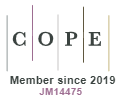Visual Research at the Crossroads
DOI:
https://doi.org/10.18778/1733-8069.5.2.05Keywords:
visual methods, documentary photography, visual data, methodology, communicating research findings, photo elicitation, video data, interpretationAbstract
The author argues that visual methods are at the crossroads. They can remain in a niche or move into the mainstream by also addressing all people using visual materials. In the social sciences, visual methods encompass photography, video, and graphic representations. With respect to the visual, one has to note that all interpretations that are ontologically dependent on photography require more interpretation. "Looking at" means "being framed by," and this means also the picture maker who is also considered to be a viewer. For the social sciences, pictures provide us with personal insights as well as with a personal record of spatial and social relationships. On this basis one may raise questions like "how pattern variations occur over time?"; "how are social processes organized?", or "what is the role of emotion in social life?" These are issues, the author continues, to which visual data can contribute. It may be added that methodological discussion should, however, besides the areas of visual data generation, analysis and interpretation also include solutions for the problem of communicating research findings. Some of these questions can be approached via controlled photo-observation, photo-elicitation techniques and imagery provided by the subjects themselves. Finally, the author turns to the question of what remains to be done? Here, he delineates three main areas: (1) evaluating the theoretical and conceptual basis of visual research; (2) creating public databases for the development and testing of theories; (3) defining "best practices" for visual research.
Downloads
References
Bourdieu, Pierre (2005) Dystynkcja. Społeczna krytyka władzy sądzenia. Przełożył P. Biłos. Warszawa: Scholar
Google Scholar
Brown, Brian J. (2001) „Doing drag”. Visualn Socjology, 16 (1): 37 – 54
Google Scholar
DOI: https://doi.org/10.1080/14725860108583825
Calcott, Steve (2006) Mexico city traffic. Dostęp: 2 październik 2008 http://www.flickr.com/photos/stevec77/87374852/
Google Scholar
Csikszentmihalyi, Mihaly i Eugene Roshberg – Halton (1987). The meaning of things Domestic symbols and the self. New York: Cambridge University Press
Google Scholar
Dyer, Geogg (2005) The ongoing moment. New York: vintage books
Google Scholar
Elkins, James (2003) Visual studies: A skeptical Introduction. New York: Routledge
Google Scholar
Fowles, Jib (1991) Startstruck: Celebrity performers and the American public. Washington, DC: Smithsonian Institution Press
Google Scholar
Gombrich, Ernst H. (1996) “The visual image: Its place in communication.” S. 41-64 w The essential Gombrich, pod redakcją R. Woodfield. London: Phaidon Press
Google Scholar
Halle, David (1993) Inside culture: Art and class in the American home. Chicago: University of Chicago Press
Google Scholar
Kunhardt, Dorothy Meserve i Philip B. Kunhardt (1993) Twenty days. New York: Castle Books
Google Scholar
Maines, Rachel (1999) The technology of orgasm. Baltimore: Johns Hopkins Press
Google Scholar
Margolis, Eric (2007) Guest editor's introduction. Visual Studies, 22(1): 2 – 12
Google Scholar
DOI: https://doi.org/10.1080/14725860601167127
Rose, Gillian (2001) Visual methodologies. Thousand Oaks, CA: Sage
Google Scholar
Steibling, Megan (1999) Practicing gender in sports. Visual Sociology, 14: 125 – 142
Google Scholar
DOI: https://doi.org/10.1080/14725869908583806
Steinberg, Cobbett (1978) Reel facts. New York: Random House
Google Scholar
Tufte, Edward (1983) The visual display of quantitative information. Cheshire, CN: Graphics Press
Google Scholar
Wallace, Anthony F.C. (1961) Culture and personality. New York: Random House
Google Scholar
DOI: https://doi.org/10.1037/13363-000
Downloads
Published
How to Cite
Issue
Section
License

This work is licensed under a Creative Commons Attribution-NonCommercial-NoDerivatives 4.0 International License.














